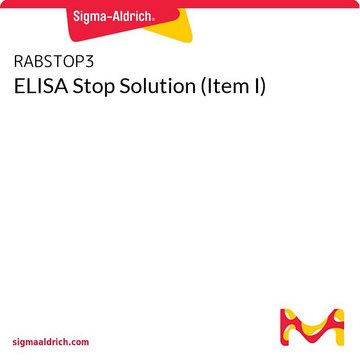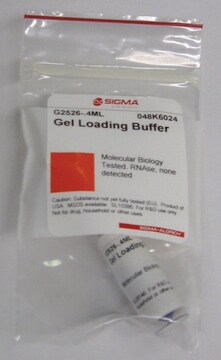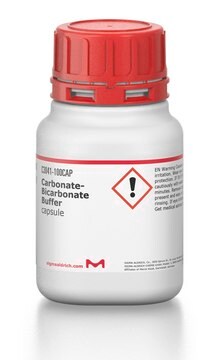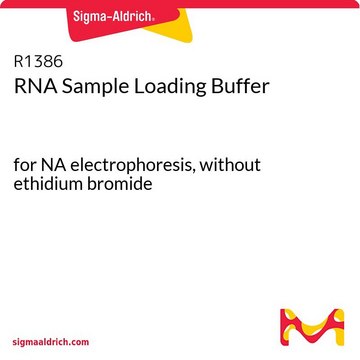S5814
Stop Reagent for TMB Substrate
chromogenic, powder
Sinónimos:
TMB liquid substrate system stop reagent
Iniciar sesiónpara Ver la Fijación de precios por contrato y de la organización
About This Item
UNSPSC Code:
12352204
NACRES:
NA.83
Productos recomendados
Nombre del producto
Stop Reagent for TMB Substrate, powder, ELISA, 450 nm
form
powder
storage temp.
room temp
General description
Stop Reagent for TMB Substrate is used to stop TMB substrate reaction for ELISA and change the absorbance from blue (620 nm) to yellow (450 nm).
Application
Stop Reagent for TMB Substrate has been used:
- for in vitro preparation and analysis of neutrophil extracellular traps (NETs)
- for direct binding enzyme linked immune sorbent assay (ELISA)
- for interference assay
signalword
Danger
Hazard Classifications
Acute Tox. 4 Dermal - Acute Tox. 4 Oral - Eye Dam. 1 - Skin Corr. 1 - Skin Sens. 1 - STOT SE 3
target_organs
Respiratory system
Storage Class
8A - Combustible corrosive hazardous materials
wgk_germany
WGK 3
flash_point_f
260.6 °F - closed cup
flash_point_c
127 °C - closed cup
Elija entre una de las versiones más recientes:
¿Ya tiene este producto?
Encuentre la documentación para los productos que ha comprado recientemente en la Biblioteca de documentos.
Los clientes también vieron
Development of a reliable assay to measure glypican-1 in plasma and serum reveals circulating glypican-1 as a novel prostate cancer biomarker
Levin RA, et al.
Oncotarget, 9(32), 22359-22359 (2018)
Romesh R Subramanian et al.
Nucleic acids research, 43(19), 9123-9132 (2015-10-09)
The in vivo potency of antisense oligonucleotides (ASO) has been significantly increased by reducing their length to 8-15 nucleotides and by the incorporation of high affinity RNA binders such as 2', 4'-bridged nucleic acids (also known as locked nucleic acid
Prevalence of interfering antibodies in dogs and cats evaluated using a species-independent assay
Bergman D, et al.
Veterinary Clinical Pathology / American Society For Veterinary Clinical Pathology, 47(2), 205-212 (2018)
Myeloid-specific deletion of peptidylarginine deiminase 4 (PAD4) mitigates atherosclerosis.
Liu Y, et al.
Frontiers in Immunology, 9, 1680-1680 (2018)
Fresthel Monica M Climacosa et al.
Protein and peptide letters, 27(10), 962-970 (2020-04-29)
Microbe-Binding Peptides (MBPs) are currently being investigated to address the problem of antimicrobial resistance. Strategies enhancing their antimicrobial activity have been developed, including peptide dimerization. Here, we present an alternative approach based on peptide polymerization, yielding hapten-labelled polymeric MBPs that
Nuestro equipo de científicos tiene experiencia en todas las áreas de investigación: Ciencias de la vida, Ciencia de los materiales, Síntesis química, Cromatografía, Analítica y muchas otras.
Póngase en contacto con el Servicio técnico









